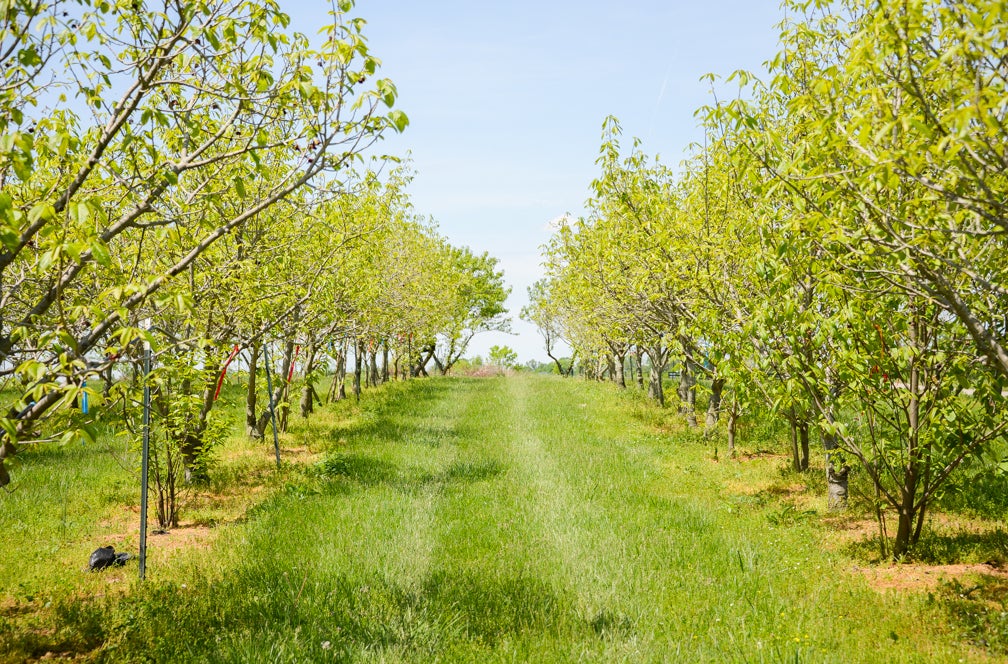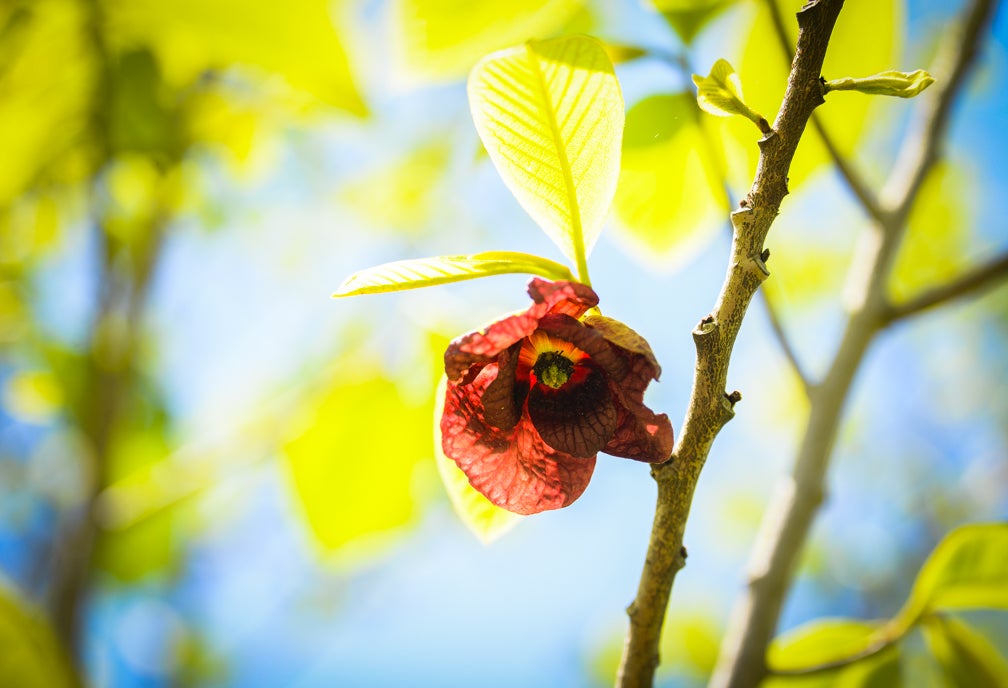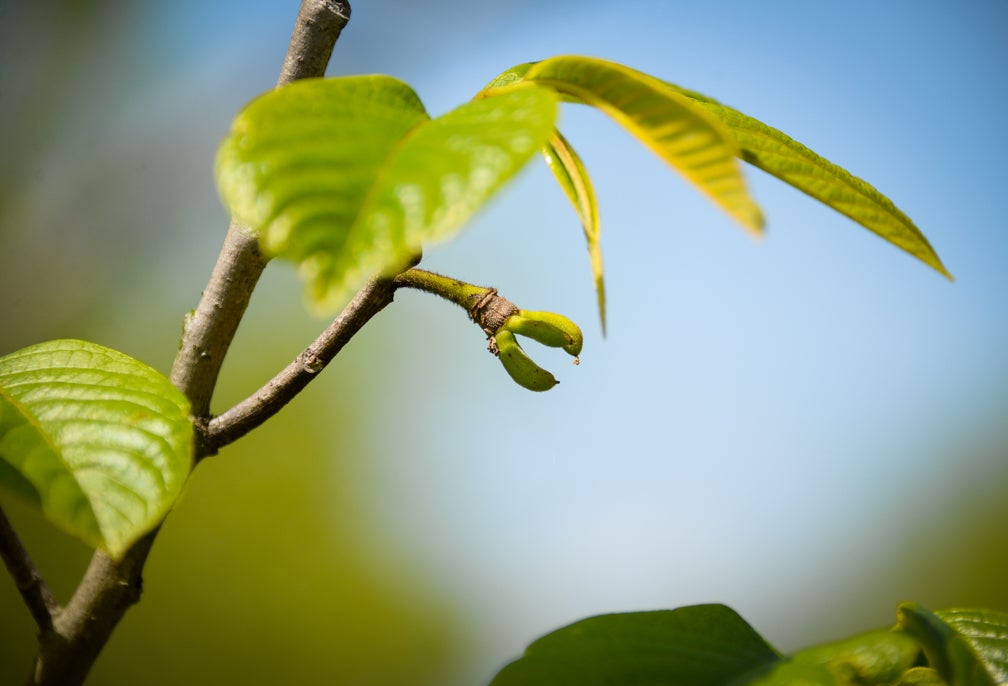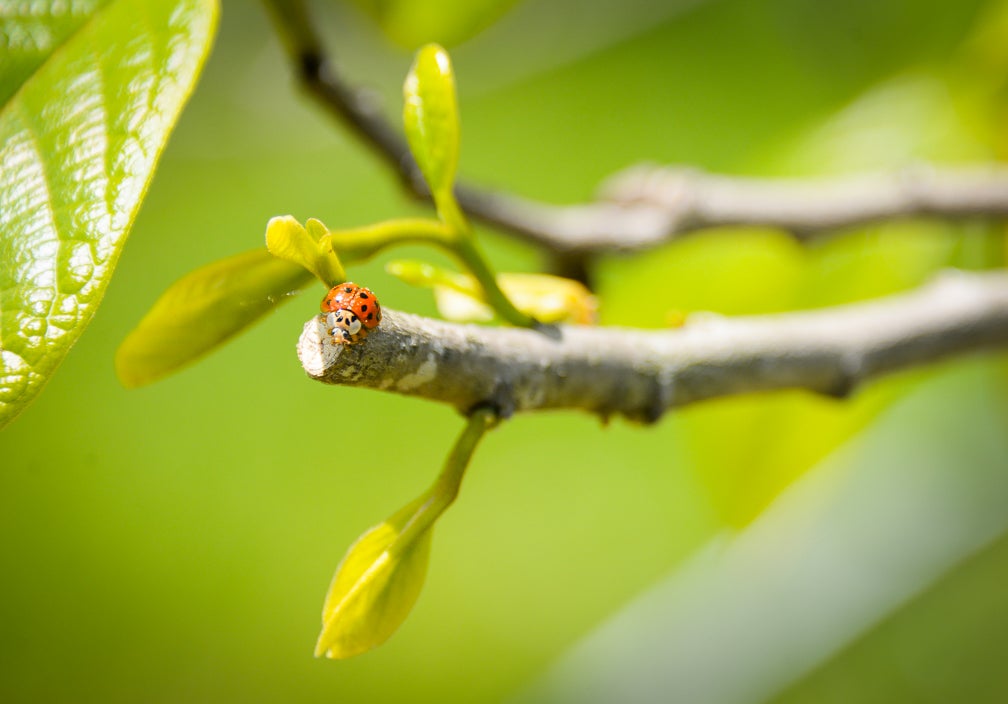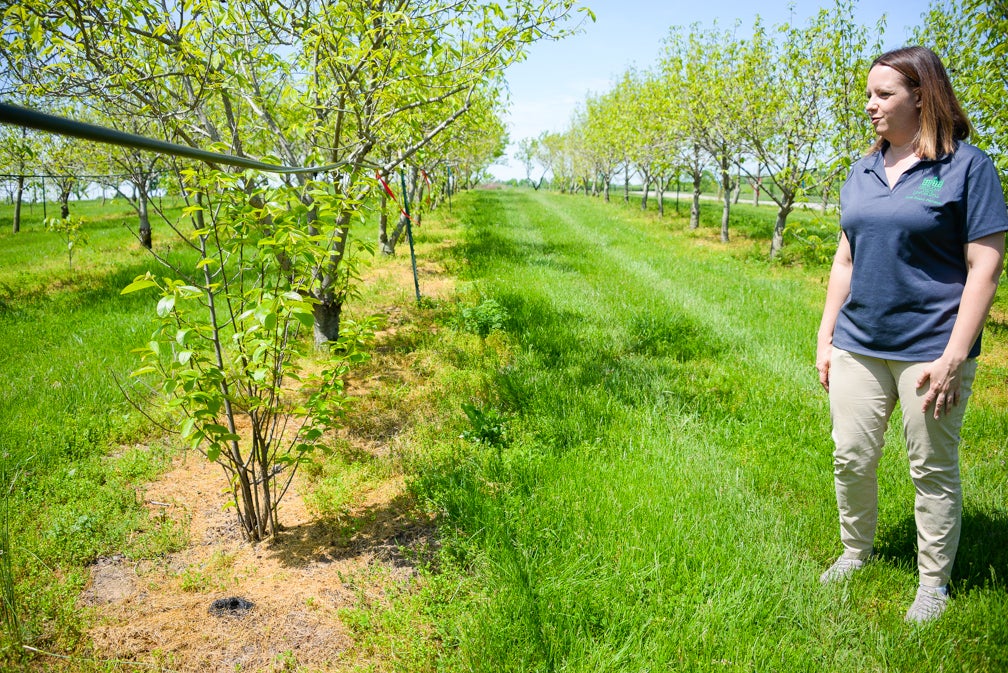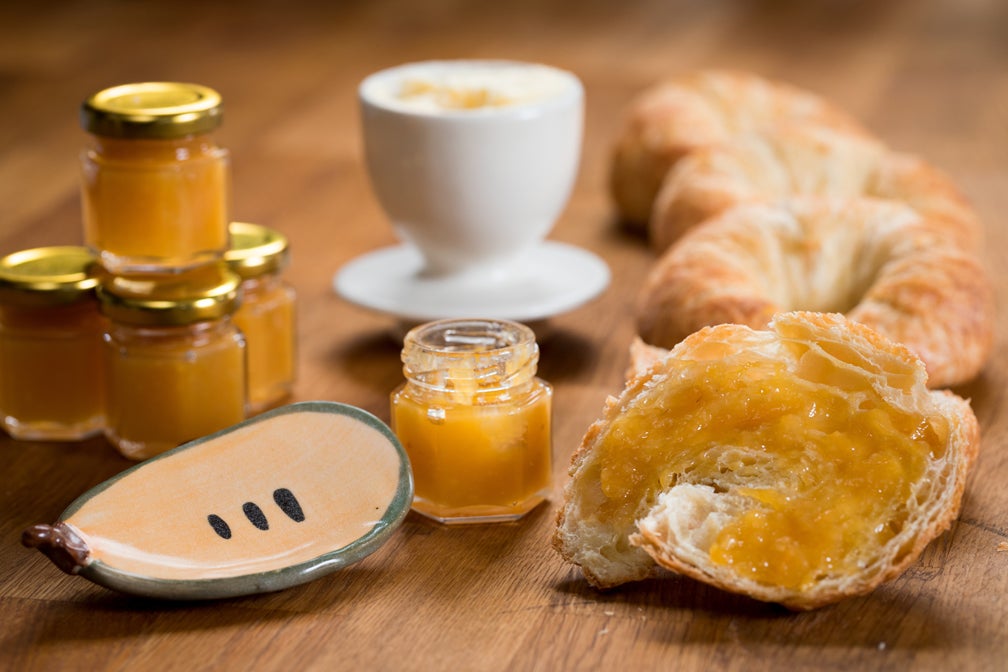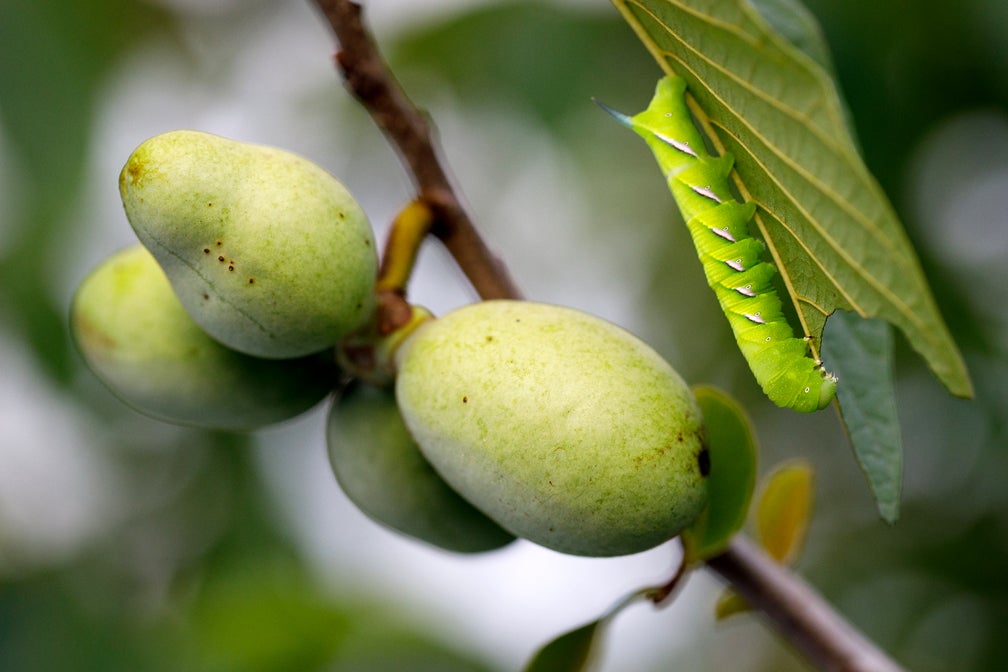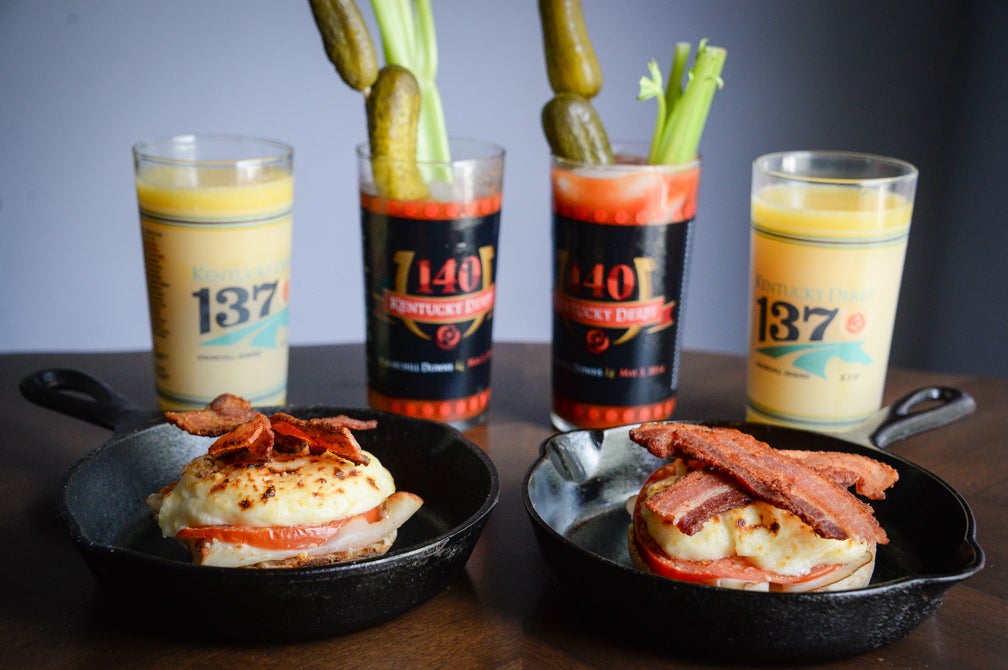By Liz Carey
If you’re over the age of 40, you probably remember the old song, “Way down yonder in the pawpaw patch.”
Now, thanks to a resurgence in popularity, “picking up a pawpaw and puttin’ ‘em in a basket” maybe as easy as heading to your local farmers market.
Deborah Hill, owner of Brooks Hill Farm in Frankfort, says she’s seen her pawpaws fly off the table at the Franklin County Farmers’ Market in recent years.
“More people are getting interested in them, there’s no doubt about that,” she said. “I have signs that I put up in the market that say ‘What’s a pawpaw?’ and people say they grew up with the song … so people have a sense of that, but they’ll say ‘I’ve never heard of them’ or they’ll want to try them because they’ve never had them before… And then, I’ll have people who are so glad to see them because they haven’t had them in a while and have never seen them at the market. It’s quite a range.”
Pawpaws are known as a custard apple, or “poor man’s banana,” and have a tropical taste like a mango or banana, experts say. The long, green fruit has a relatively short season from the beginning of September through the middle of October, and doesn’t keep long. Unlike apples or peaches, the fruit bruises easily and only lasts a few days once it ripens, said Sheri Crabtree, horticulture research and extension associate with Kentucky State University.
At KSU, a pawpaw propagation program helps to connect farmers to the fruit and vice versa. The only program in the world devoted to pawpaws, KSU maintains a small grove of pawpaws on its research farm and sells pawpaw seeds and small trees, the only fruit tree native to America. Crabtree said the university also harvests the pawpaws from its own patch and processes the fruit for use in foods used at the university for special events, like pawpaw ice cream.
“Pawpaws have a long history in America,” she said. “Chilled pawpaw was reportedly one of George Washington’s favorite desserts, and there is documented evidence of Thomas Jefferson trading pawpaw seeds in France. The North American Indians used the pawpaw bark for medicinal purposes, and it’s noted for saving the lives of Lewis and Clarke — pawpaws were the food that saved the expedition from starving on their trip back.”
Mark Twain and Daniel Boone were said to be pawpaw fans, Crabtree said. There’s even a link to pawpaws in Kentucky’s history.
According to the Pikeville-Pike County Tourism board, on Election Day in 1882, Tolbert McCoy, a son of Randolph McCoy, exchanged words with Ellison Hatfield, the brother of William “Devil Anse” Hatfield. While the details of the exchange vary, the war of words turned into a scuffle. Tolbert’s brothers, Pharmer and Randolph Jr., joined in the fight and the three eventually ended up shooting Ellison Hatfield and stabbing him more than 20 times. While law enforcement officials decided to arrest the McCoy boys and send them to jail in Pikeville, “Devil Anse” Hatfield opted to take justice into his own hands.
Hatfield formed a posse and intercepted the prisoners before they could get to the jail, eventually tying the three to pawpaw trees and shooting them as retribution for Ellison’s death. A sign in Pike County, historical marker No. 2047, marks the spot where the “Pawpaw Tree Incident” took place.
The trees are more than just a footnote in history though — they were once a staple of Appalachian food. Crabtree said that the fruit was more popular when poverty forced people to forage for their foods. Growing from Canada to Florida and from the East Coast to Kansas, the trees and their fruit grow relatively maintenance free and are relatively easy to harvest — literally needing only to be shaken in order to pluck fruit that has fallen from the ground. The third Foxfire book “Animal Care, Banjos and Dulcimers, Hide Tanning, Summer and Fall Wild Foods…” talks about how Appalachians would find pawpaws and cook them into several treats, like pawpaw bread, pawpaw flump (like a pawpaw flavored meringue) and pawpaw pie.
After some time in favor however, pawpaws lost their appeal.
“I think when our economy changed and wealthy/successful people would be more likely to eat imports, the popularity of foraged foods lessened,” Crabtree said.
But since the fruit has since gained a cult-like following, with everything from a man, John Vukmirovich, roaming the country planting pawpaws Johnny Appleseed-style, to a pawpaw festival in Ohio every year.
The rise in popularity of farm-to-table food has helped to re-acquaint people with the pawpaw now, Crabtree said.
Hill agrees.
“I think it has to do with local food movements, the seasonality of things,” Hill said. “I think it’s an acquired taste. Some people love them and some people hate them. I think I am right in between.”
In 2017, as part of the Kentucky Proud program, KSU, in cooperation with the Kentucky Agricultural Department, was instrumental in connecting Kentuckians to pawpaw products throughout the state. In Woodford County, Wildside Winery made a pawpaw wine, which has become increasingly popular, a spokesman for the winery said.
At Frankfort-based West Sixth Brewing, along with Ethereal Brewing Company, pawpaw beer became a fall hit as part of the collaboration.
“We made a beer that was hop forward with the tropical fruit elements of pawpaws,” said Andy Smith, West Sixth brewer. “People really enjoyed it, but we haven’t used pawpaws since. It’s kind of hard to work with because of the pulpiness.”
While it isn’t something that the brewery will be making again in the immediate future, Smith didn’t rule out another pawpaw beer run in the future.
“It’s a really neat fruit to work with because it is indigenous to the state,” he said. “We do beers with fruit in them all the time. And we were excited to be able to work with Kentucky Proud and Ethereal on the pawpaw project. But it takes a lot of pawpaws to make the flavor stand out in the beer, which we found out when we worked with it.”
While pawpaws marketability may stem from the public’s lack of familiarity with the fruit, as well as the fruit’s relatively short shelf-life, new products may help get a taste for pawpaws back into the minds of foodies everywhere. And it’s the taste of pawpaws, if not a hankering for simpler days of farm-fresh produce, that may yet help get more pawpaws into Kentuckians’ pockets come this fall.
Pawpaw Preserves
- 12 pawpaws (about 5 pounds)
- 2 cups water
- ¾ cups sugar
- 1 lemon
- 1 orange
Peel pawpaws. Put in kettle with water, without removing seeds. Boil until soft, then put through a sieve. Add sugar and juice of orange and lemon. Boil until thick. Grated rind of orange or lemon may be added. Put in sterilized jars and seal.
Pawpaw Pie or Parfait
- ½ cup brown sugar
- 1 envelope unflavored gelatin
- ½ tsp. salt
- 2/3 cup milk
- 3 eggs, separated
- 1 cup strained pawpaw pulp
- ¼ cup sugar
In a saucepan, mix together brown sugar, gelatin and salt. Stir in milk and slightly beaten egg yolks. Heat and stir until mixture comes to a boil. Remove from fire and stir in pawpaw pulp. Chill until it mounds slightly when spooned (20 to 30 minutes in refrigerator). Shortly before the mixture is sufficiently set, beat egg whites until they form soft peaks; then gradually add sugar, beating until stiff peaks form. Fold the partly set pawpaw mixture thoroughly into egg whites. Pour into a 9-inch graham cracker crust or into parfait glasses and chill until firm. “Then lock the door to keep the neighbors out.”
Contributed to the KSU recipe collection by Euell Gibbons, who cites the book “Mountain Measures, a collection of recipes compiled by the Junior League of Charleston, West Virginia”
Pawpaw Bread
- 1 cup melted butter
- 2 cups sugar
- 4 eggs
- 2 cups pawpaw pulp
- 1 Tbsp. lemon juice
- 4 cups sifted all-purpose flour
- 2 tsp. baking powder
- 3 cups pecan pieces plus 16 pecan halves
Preheat oven to 375 degrees. Grease two 9x4x2-inch loaf pans. Beat together butter, sugar and eggs. Add and beat in the pawpaw pulp and lemon juice. Sift the flour and baking powder together, and stir them into the batter. Stir in the pecans and scrape the batter into the loaf pans. Garnish each loaf with eight pecan halves, and bake for 1 hour and 15 minutes. The top corners of the loaf will burn, but that adds flavor and character.
Contributed to the KSU recipe collection by Mark F. Sohn, of Pikeville, Kentucky, from Mountain Country Cooking, St. Martin’s Press, New York, 1996.
Pawpaw Ice Cream
- 1 quart cold milk
- 6 eggs
- ½ tsp. salt
- 1½ cups sugar
- 1 cup pureed pawpaw pulp, or more to taste
- juice of 1 lemon
- 1 quart heavy cream
- 2 Tbsp. vanilla
Scald 3 cups of the milk in the top of a double boiler. Beat eggs well; add salt, sugar and the remaining cup of milk. Stir egg mixture slowly into the hot milk and cook over a small amount of simmering hot water, stirring constantly, until mixture coats a clean metal spoon. To prevent curdling, do not have the water boiling vigorously, and take care not to overcook. Stop cooking as soon as the custard coats the spoon and remove from heat at once. Cool pan of custard in another pan containing cold water, then chill thoroughly in refrigerator.
Combine pawpaw puree with the lemon juice and add to the chilled custard along with the cream and vanilla. Pour mixture into a chilled 1-gallon ice cream freezer canister and fit dasher into place. Freeze and ripen according to directions accompanying ice cream freezer, or as follows:
Fill the freezer tub around the canister with finely cracked ice and salt, using one part ice cream salt to eight parts of ice, or about 1-quart of salt for a gallon-sized ice cream freezer. Fill the freezer half full of ice before adding the first layer of salt, then alternate layers of ice and salt until the tub is filled. Freeze until the ice cream stiffens (about 20 minutes with an electric ice cream freezer). Then repack the freezer tub with ice, or remove the ice cream and place it in an ice cream mold, and let the ice cream ripen for several hours before serving.
To repack the freezer, remove the dasher, plug up the hole in the lid of the ice cream canister, drain out the salt water through the hole in the side of the ice cream freezer, and add fresh ice and salt to fill the freezer tub. Put cracked ice, but no salt, over the top of the canister, too. Cover the whole freezer with blankets or newspapers and let it stand in a cool place for several hours.
Contributed to the KSU recipe collection by Marilyn Kluger, from “The Wild Flavor,” published by Jeremy P. Tarcher, Los Angeles, and distributed by Houghton Mifflin, New York, 1973.

